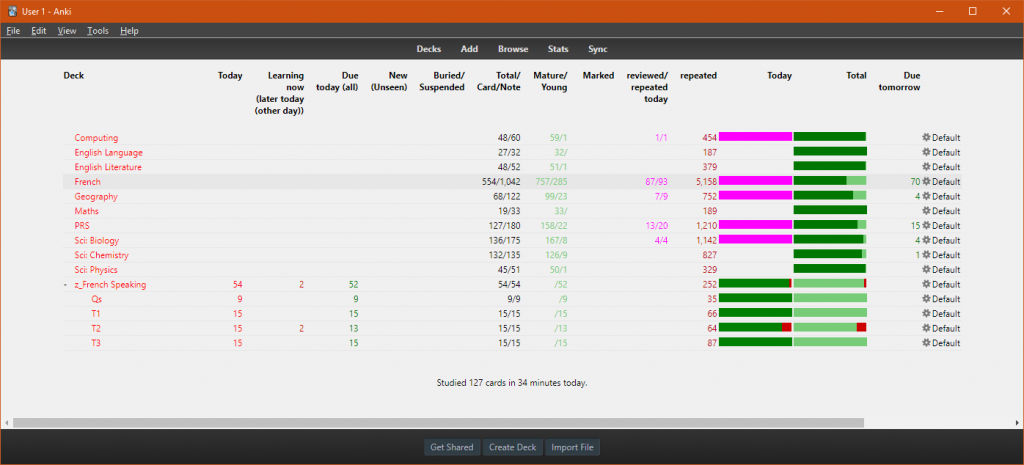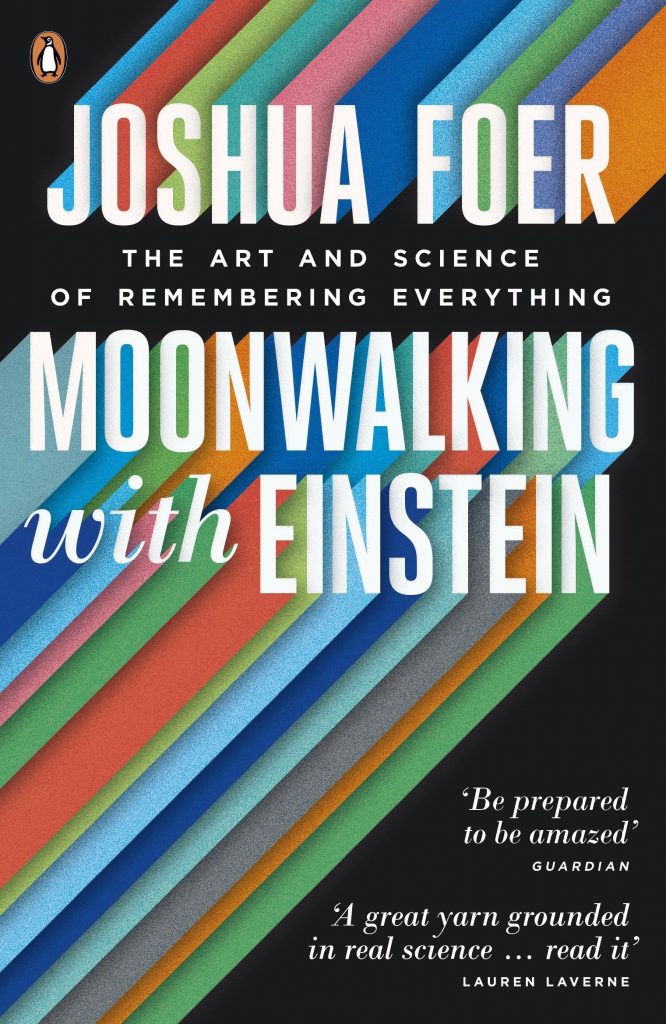Today, I shall present to you some invaluable study techniques for the memorisation of knowledge you need for your exams. After all, we’ve all been in that position where we forgot that crucial fact, necessary for answering a question.
Having guaranteed access to a fact (in your mind) could be the catalyst for everything else to follow; from a single piece of factual information, you could use your general understanding to prove your capability in an exam.
Subjects including the sciences and the mathematics may be obvious exemplars of the power of memorisation. Certainly, formulas are essential in ensuring your calculation makes sense.
Nonetheless, practically every other subject has key cornerstones which you could memorise to support the mass of your remaining understanding.
As a result, you better be learning some fast memorisation techniques as a student before it’s too late!
Get your work in order: How Should You Prioritise Your Work as a Student?

insert_linkA Solid Understanding is Ultimately Irreplaceable
Though, of course, memorisation is not everything.
On the contrary, the most important element in learning is truly being able to understand the concepts at hand: an understanding can be applied to unfamiliar situations, whereas memorised facts, less so.
For instance, I could tell you to memorise “Ecce ego te Hank” (Latin) as “I want you, Hank”. But do you know what each individual Latin word means?
Could you use that to deduce the Latin for “I wanted you, Hank”? Without an understanding of the grammar rules of Latin, probably not.
Therefore, I beg you not to rely solely on memorisation study techniques, but on the understanding.
Indeed, there is a reason I use the phrases “key facts”, “key knowledge”, and “key nuggets of information”. What you memorise is what you can’t survive an exam without—that from which your understanding follows.
After all, sometimes you can’t apply your understanding without knowing a few key facts. Likewise, memorised knowledge will be of no help when you don’t understand how to use it!
insert_linkHowever, The Merciless Examinations of Academia Are Quite Flawed
Alas, focusing primarily on understanding is not always the best way to study for an exam. By contrast, sometimes, the best way is to memorise as your study technique.
For example, I once completed a French oral (speaking) exam, which involved a “conversation” section. Moreover, for that section, there was a list of possible questions I could have been asked.

Initially, I thought the best way to prepare would be a bottom-up approach, whereby I gain an understanding of vocabulary and grammar etc. This failed spectacularly in the practice exam.
Consequently, I embraced a study technique for memorisation: craft a decent but highly-scoring response to each question and memorise them all.
Having subsequently done that, my true exam was far more successful. The focus was shifted from my creative skills (to think of a response on the spot) and French skills to exclusively my French skills.
Also, as a matter of fact, memorisation techniques actually supported my understanding. To demonstrate, I could henceforth transfer certain memorised phrases and structures into other exams!
In the remainder of this article, I will teach you the same study techniques for memorisation that I used to revise quickly and effectively.
insert_linkThe Tools You’ll Need for Efficient Memorisation
insert_link1. Anki Flashcard Application
My first study tip for memorisation is the beautiful Anki application. Not only does it have desktop and mobile applications, but you can access your flashcards online.
Additionally, leveraging spatial repetition alongside active-recall, Anki is one of the most effective ways to learn anything. However, there are certain best practices you should probably stick to—which are touched on here.
Firstly, your decks (of flashcards) should have a high-level categorisation of your studies. This may be grouped by the subject, or exam paper, for instance.
Furthermore, by dragging a desk on top of another, you can have sub-decks as well, if you wish.

Secondly, each card should be quick and simple, so avoid ones requiring long lists as much as possible.
In truth, it’s pretty simple to set up—you just load your flashcards and go!
When you are studying (or memorising) you can tell the application how well you could recall the information. Accordingly, it will intelligently decide on the next best time to review the card and show it to you then.
Learn about active-recall and spatial repetition: Are You Ill-Prepared for Exams? Read This Quickly
insert_link2. A Spreadsheet Application
Now, that’s a bit absurd—a spreadsheet? We aren’t doing any accounting, are we? No, not today.
Conversely, spreadsheets can be used for a study technique for memorising all sorts of things. I was made aware of this memorisation tip by a friend who showed me this video.
In its most basic form, you have one column consisting of questions and the next consisting of the answers. As a bonus tip, use text wrapping and merge question cells when the answer is multi-line.
But when it comes to revising, you set the second column’s text colour to white and try to recall the information. (Also, I like to type out a response—if necessary—in a third column to the right.)
Afterwards, you fill each question cell with a colour corresponding to your confidence. This hence means that when you next through the sheet, you can capitalise on your weak points.
Moreover, in terms of organisation, you can have separate files as well as tabs within each file. I also like to add sub-headings to the sheet, which are shaded in a tone of grey (depending on the sub-heading level).
While the above can be achieved with Google Sheets, I personally prefer using Microsoft Excel Online. Although, it’s rarely convenient to use the Excel desktop application.

insert_linkA Healthy Combination of the Two
Even though both methods allow you to take advantage of spatial repetition and active recall, there are significant differences.
To demonstrate, Anki gives you questions in a random order, which can be both a benefit and a detriment.
On the other hand, the spreadsheet method has the information where you expect to find it; you have context. As a result, you may be more likely to make links between facts hence remember them better.
With that in mind, what is the best study technique for memorising with Anki and spreadsheets? This is, in fact, a question I asked a long time ago.
While I will share a study tip for memorising information quickly, I encourage caution as it should only be used some of the time, including when:
- Each item you are memorising is rather meaty (for example, when memorising a few sentences perfectly—it takes a long time to recall)
- You want to be able to see and modify your questions/answers in a single, structured place.
- The spreadsheet is preferred, but you really need to hammer a disproportionate amount of time into memorising a lot—swiftly.
I did the following when I revised for my aforementioned French exam, and it took a long time to set up.
insert_linkHow I Memorised 45 Answers in a Matter of Weeks (Almost Flawlessly)
Firstly, I used to spreadsheet method to establish all my questions and answers. Consequently, it is much easier to access and edit all of them when compared to using Anki.
Next, I put all of the questions into Anki as a “Basic” card. Since Anki is being used solely as a prompt, the back of the card could theoretically be empty.
Although, you might want to put the answer in Anki anyway, for the mere sake of convenience; just don’t bother maintaining the answers in Anki, because you’ll refer to your spreadsheet for them.
Finally, you have a hybrid memorisation technique that leverages the autonomous spatial repetition of Anki alongside the pleasing organisation of a spreadsheet! Remember, I still recommend colour-coding the questions in your spreadsheet for reference.
Sometimes only you know best what you ought to be revising!
You have just 168 hours per week: How to Make a Daily Schedule for Yourself (for the Most Productivity)
insert_linkTime Management: Spend as Little Time as Possible Learning the Most

How do you spend your time on these study techniques for the most efficient memorisation of key points?
Above all, ensure that what you’re studying is relevant to your current course and exams—needless to say.
Also, I would make it a rule to dedicate a daily Anki session: no matter what, you will study and memorise all cards due for that day. As a result, life is far less stressful when you keep on top of your cards.
However, if you do fall behind—after a massive card-adding session, for instance—you’ll have to work extra hard. Luckily, though, Anki can prioritise the cards for you to at least minimise the loss of imperfect spatial repetition.
That is my generally recommended strategy. On the other hand, for shorter-term, herculean efforts, a different approach is needed. Back to my French exam:
While I retained my dedicated Anki session, I chose not to revise any verbal French responses. Conversely, I separately dedicated multiple work sessions to go through the French Anki deck in a day.
That’s because it’s not the sort of thing you want to be constantly recalling over the long term: a specific response, in reality, isn’t helpful to know in life. What is important, rather, is the broadly applicable key points of knowledge.
In addition, if you want another study tip for memorisation, it would be to learn consistently. I, for example, allocated sufficient learning time daily leading up to my French oral examination.
insert_linkConclusion: Are These the Best Study Techniques for Memorisation?
In conclusion, active recall and spatial repetition are yet again the best ways to study and memorise facts.
Remember, though, memorisation isn’t everything, and that a thorough understanding is an irreplaceable pillar.
Accordingly, that which you memorise should be those cornerstone facts that can’t be made up or inferred from your understanding. (Think quotes, formulas, and dates.) These then act as the foundation from which your understanding picks up in an exam.
And, of course, extreme measures may be warranted in certain, albeit rare, situations.
insert_linkMy Book Recommendation of The Week
If you really want to get into the juices of effective memorisation techniques for not just students, but life as a whole, consider reading:
Moonwalking with Einstein: The Art and Science of Remembering Everything
Then, I would love to hear your voice in the comments:
What is your preferred way to memorise information?



